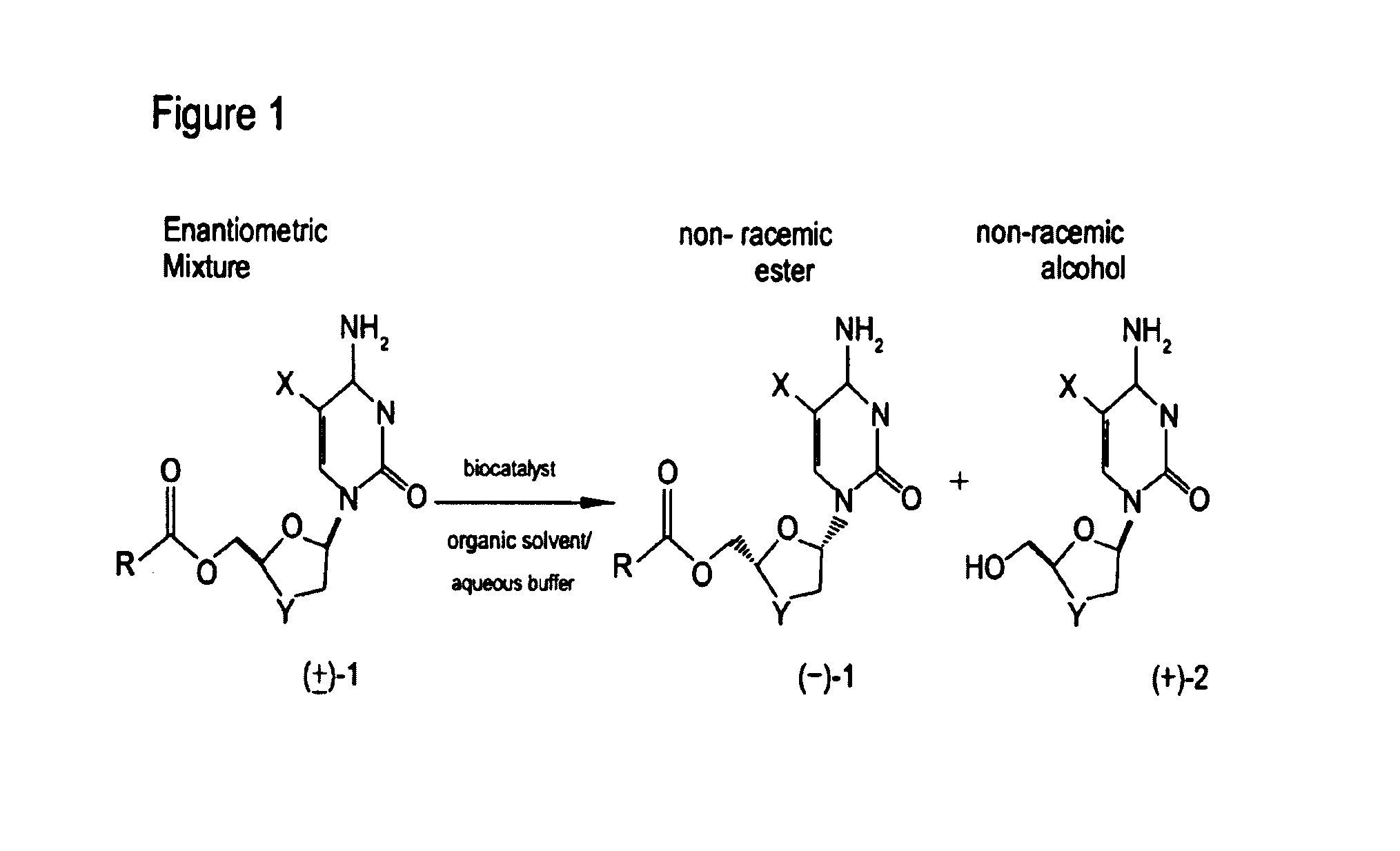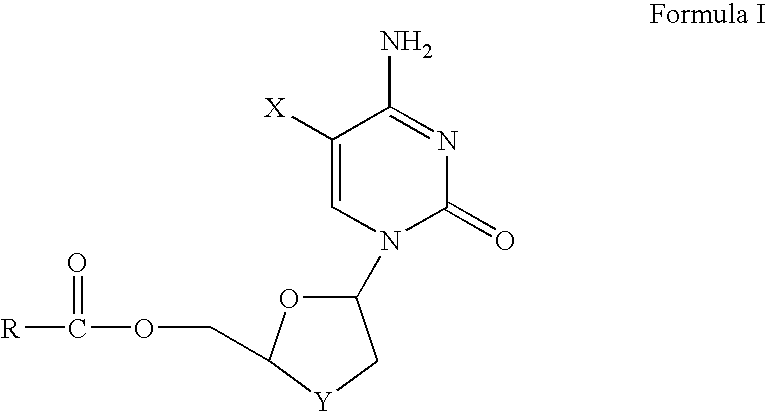Non-homogeneous systems for the resolution of enantiomeric mixtures
a technology of enantiomeric mixtures and non-homogeneous systems, which is applied in the direction of fermentation, etc., can solve the problems of high substrate loading, reduced enzyme consumption, and high substrate loading of enantiomeric mixtures of hydrophobic esters, so as to achieve high substrate loading and reduce the effect of enzyme consumption
- Summary
- Abstract
- Description
- Claims
- Application Information
AI Technical Summary
Benefits of technology
Problems solved by technology
Method used
Image
Examples
example 1
Porcine Liver Eaterase Catalyzed Resolution of FTC Butyrate
[0167]Racemic FTC-butyrate (1.0 g) was dissolved in 5.0 ml of n-amyl alcohol by heating to 75° C. for 30 minutes to make an organic component. The organic component was then mixed with an aqueous component comprising 3.8 ml of 0.3 M pH 7.5 phosphate buffer and the non-homogeneous system was allowed to cool to 35° C. Porcine liver esterase solution, 1.2 ml of 650 U / ml Altus PLE solution (Altus Biologics, Cambridge, Mass.) was then added to the aqueous layer and the resulting suspension was stirred with gentle agitation. The temperature was maintained at 32° C. by an external water-bath. The pH was maintained at 7.5 by the addition of 50% aqueous sodium hydroxide as necessary. The optical purity of the unreacted (−)-butyrate ester and the (+)-FTC alcohol product were monitored by HPLC analysis using a chiral stationary phase column. After 24 hours, the (+)-enantiomer of the FTC ester was completely converted based on HPLC anal...
example 2
CLEC™-PLE Catalyzed Reaction of FTC Butyrate in 83% of n-amyl Alcohol (or 3-Me-3-pentanol) / aqueous Mixture
[0172]The reaction conditions and procedures were the same as in Example 1, except the volume of phosphate buffer was 1 ml and the volume of the organic component was 8.3 ml. The conversion was 38% for n-amyl alcohol and 25% for 3-methyl-3-pentanol after 36 h (see Table 1, Reactions 12 and 13).
example 3
PSL-Catalyzed Reaction of FTC Butyrate in 50% n-amyl alcohol / aqueous Mixture
[0173]The reaction conditions and procedures were the same as in Example 1, except that 100 mg of soluble PSL-30 (PSL-30 is PS30 from Amano) was used. The conversion was 56% after 24 h and the (−)-enantiomer was preferentially hydrolyzed. The optical purity of the remaining ester was 92% at 56% conversion (see Table 1, Reaction 21).
PUM
| Property | Measurement | Unit |
|---|---|---|
| miscible | aaaaa | aaaaa |
| temperature | aaaaa | aaaaa |
| temperature | aaaaa | aaaaa |
Abstract
Description
Claims
Application Information
 Login to View More
Login to View More - R&D
- Intellectual Property
- Life Sciences
- Materials
- Tech Scout
- Unparalleled Data Quality
- Higher Quality Content
- 60% Fewer Hallucinations
Browse by: Latest US Patents, China's latest patents, Technical Efficacy Thesaurus, Application Domain, Technology Topic, Popular Technical Reports.
© 2025 PatSnap. All rights reserved.Legal|Privacy policy|Modern Slavery Act Transparency Statement|Sitemap|About US| Contact US: help@patsnap.com



